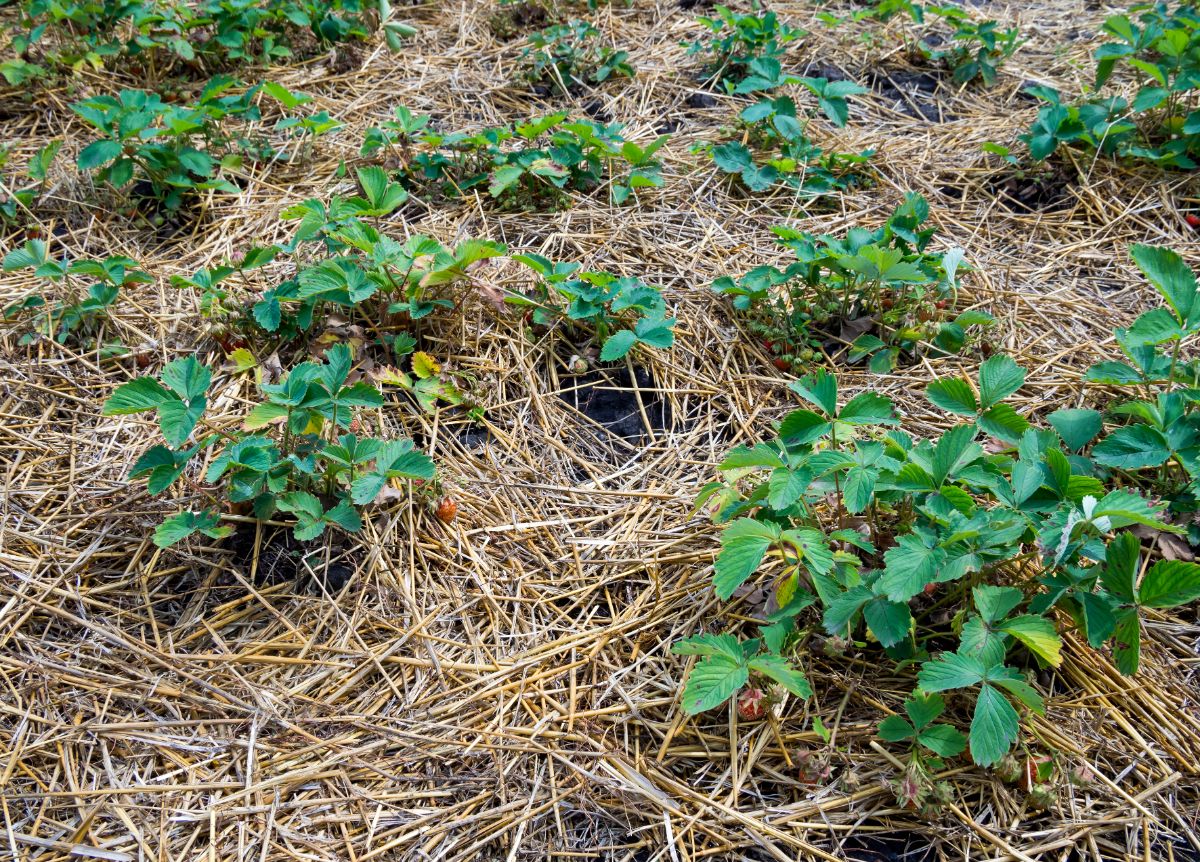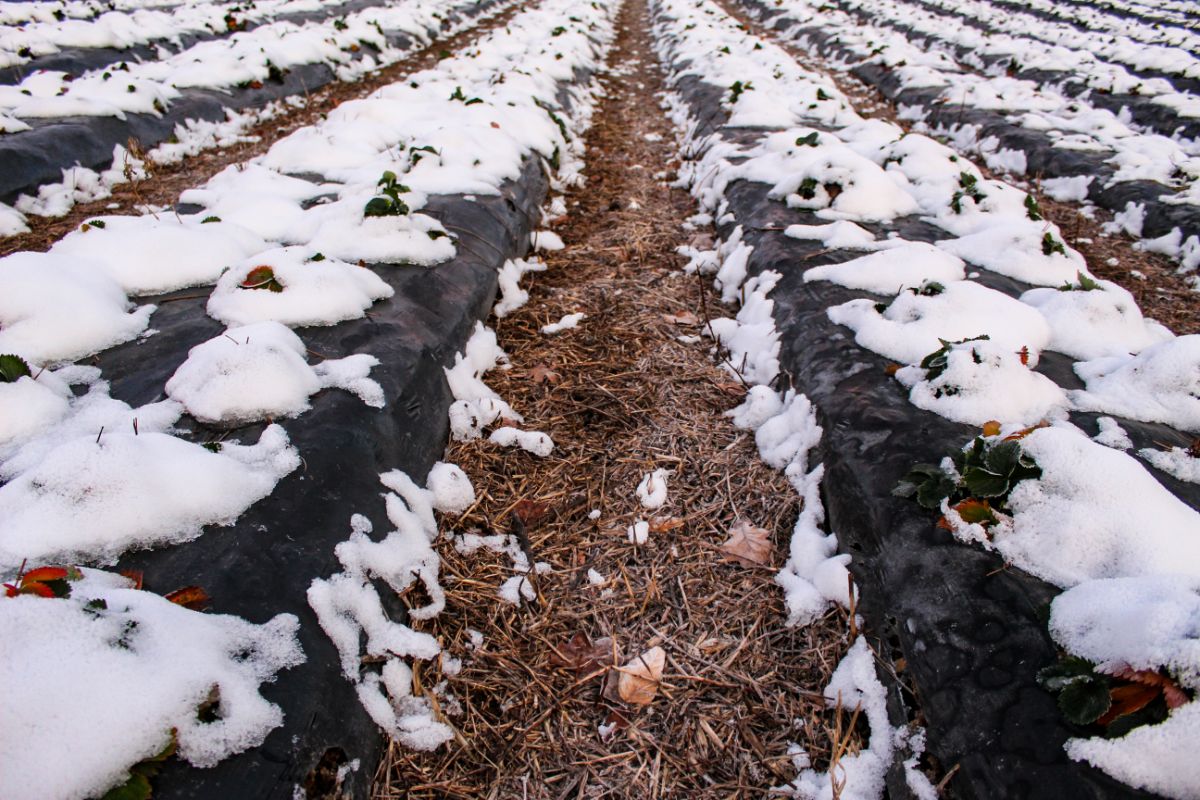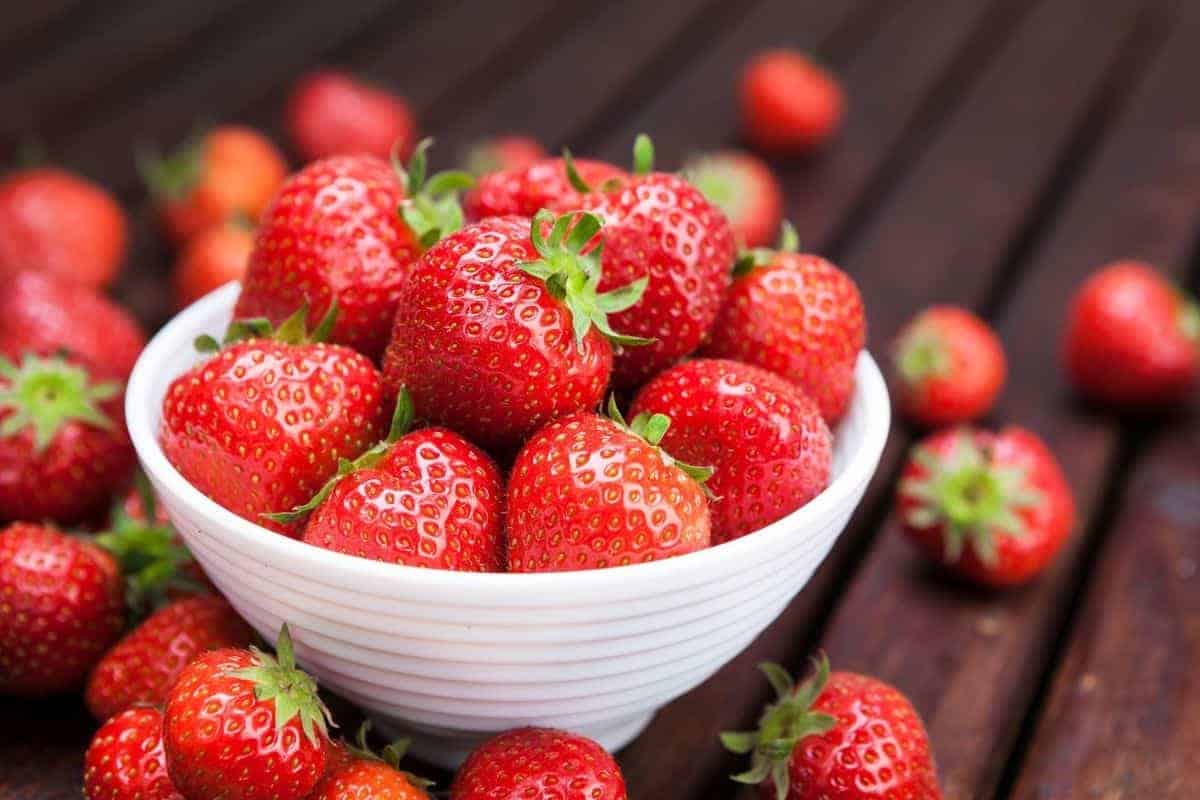Mulching strawberry plants is a necessary step in the care of perennial strawberry care. For gardeners who use the matted row system to grow strawberries, repairing and getting strawberry plants ready for the winter is part of the process. In milder temperate climates, minimal mulching is required as strawberries can withstand nominal freezing temperatures without much difficulty. But if the temperature drops below 10 degrees Fahrenheit, the crowns will often get hurt and won’t bloom the next spring.
Putting down a thick layer of straw mulch over the strawberry crowns in the winter is one of the easiest and most common ways to give them protection. It is relative easy to apply and serves several beneficial functions for your plants. [feast_advanced_jump_to].
If you want a bountiful strawberry harvest next summer, it’s essential to properly cover and insulate your plants for winter. But timing is everything when it comes to winterizing strawberries Cover too early and you risk disease or rot Wait too long and harsh temperatures can damage flower buds, resulting in fewer fruits. So when exactly should you cover strawberry plants for winter? Read on for tips on identifying the ideal time.
Why Cover Strawberries for Winter?
Strawberries are perennials that renew themselves each year. In late summer and fall, flowers initiate and buds form that will become next year’s crop These buds overwinter close to the crown of the plant
If temperatures dip below around 15°F in winter, cold damage can occur to new buds, injuring or killing them Damaged buds won’t develop into flowers and fruit normally come spring
Covering plants insulates buds from frigid air. It also prevents frost heaving, which happens when cycles of soil freezing and thawing push plants up from the ground. This exposes roots and leads to desiccation or plant loss.
In short, covering strawberries protects the buds that will become your berries next summer. It’s cheap winter insurance for a bountiful harvest.
Signs Strawberry Plants Are Ready for Winter Cover
Timing is everything when it comes to covering strawberries. Do it too early, and you risk diseases like botrytis or phytophthora. Wait too long, and plants may not be fully dormant, leaving them susceptible to cold injury.
Watch for these signs that strawberry plants are ready for winter cover:
-
Daytime highs consistently reach below 40°F
-
Overnight lows are in the mid to low 20s°F
-
Leaves cease new growth and plants appear dormant
-
The top half-inch of soil has frozen
-
Insulated plants show cold damage after 3 days under cover
The precise timing varies by region and year. Mid-fall is typical for colder climates while December or even January works for mild winter areas. The key is being sure plants are fully dormant first.
How to Know If It’s Too Early to Cover Strawberries
Covering before plants have hardened off for winter can cause issues. Here are signs it’s still too early:
-
Daily high temperatures are still reaching 50°F or more
-
Leaves are still green and active new growth is occurring
-
The soil is still warm and hasn’t had any freezes
-
Unmulched plants still appear healthy and vigorous
-
Insulated test plants remain green and viable after 3 days
If plants are still actively growing, hold off on winterizing. Allow colder temps, shorter days, and light frosts to encourage full dormancy first.
The Best Materials for Covering Strawberry Plants
Once dormant, use these materials to provide proper winter insulation:
-
Straw – Easy to apply and widely available. Use 4-6 inches of loose straw.
-
Leaves – Chop leaves with a mower before applying a 4-6 inch layer. Avoid packed leaves.
-
Pine needles – Provides insulation and moisture retention. Apply 4-6 inches.
-
Hay – Use clean, seed-free hay. Apply a loose 4-6 inch layer.
-
Row cover fabric – Allows air and light circulation. Use heavyweight fabric.
-
Wood chips or mulch – Apply a 4-6 inch layer of shredded bark or wood mulch.
The key is providing a loose, airy material that won’t compact under snow and form a dense mat. Avoid covers like heavy tarps that can cause rotting.
Step-by-Step Guide to Covering Strawberry Plants for Winter
Follow these steps to properly cover and insulate dormant strawberry plants:
-
Cease watering plants and allow soil to dry out partially before covering. Moist soil promotes rot.
-
Remove any weeds, debris, or old foliage from the strawberry bed. Tidy up plants.
-
Test a few plants by mounding a cover over them for 3-4 days. Check for cold damage; if none, full dormancy is achieved.
-
Apply your winter mulch of choice, mounding loosely to a depth of 4-6 inches over plants and surrounding soil.
-
For potted plants, surround containers with insulation like bubble wrap or burlap. Fill the inner pot with loose straw before replacing the outer decorative pot.
-
Check periodically over winter. Remulch any areas where cover becomes thin.
-
Remove mulch in spring once new growth resumes.
With proper timing and materials, your strawberry plants will be protected from harsh winter cold. The reward will be plentiful fruit production in the year ahead. Time your winter mulching well and you’ll be enjoying homegrown berries again next summer.
How to Mulch Strawberry Plants with Straw
In order to ensure that your plants are adequately protected, follow these steps:

1. Obtain clean straw. For mulching, oat, rye, or wheat straw work best because they are light, loose, and won’t suffocate the plants. The leaves will pile up and suffocate your strawberries, and hay usually has a lot of weed and grass seeds that will sprout when it gets warmer and either smother or kill your strawberries. Using straw also reduces the chance of inoculating your bed with insect pests or other pathogens. One bale of straw will typically cover about 30 feet of 4-foot-wide matted row.
2. Choose the appropriate time to apply the straw mulch. The straw should not be applied until the strawberry plants have gone dormant for the winter. Otherwise, the plants might be smothered. When temperatures drop below 20° F for three or four days in a row, strawberry plants usually go to sleep. Plants can usually be identified as dormant by the older leaves, which will turn brown first. The younger leaves will turn from a bright green to a dull green or gray color. It is best not to wait until the ground is completely frozen.
3. Apply the straw mulch to the strawberry plants. Once the plants are dormant, apply the mulch! Break up the bale and then break the flakes completely. Apply loose straw to the row of strawberry plants 3 to 6 inches deep. It is also good to cover any exposed soil between rows or in the planting.
4. Remove the straw before springtime. It is important to remove the straw mulch from the plants prior to them beginning to grow. While the top 2 to 4 inches of soil are still warm, gently rake most of the straw off the plants and into the rows. Leave a thin layer of straw over the plants. This thin layer will allow the plants to grow through it, and it will also keep the strawberries clean by limiting their contact with the dirt below.
Benefits of Mulching Strawberry Plants with Straw for Winter

As was already said, the main benefit of covering your strawberry bed with straw mulch is that it keeps the plants from getting cold damage. However, simple temperature control is not the only benefit of using a straw mulch (or other mulch). Mulching appropriately also prevents frost heaving of the crowns. Additionally, the moisture content of the dormant plants is better maintained by preventing the winter winds from desiccating. And, perhaps most importantly, mulching helps reduce the risk of your plants developing black root rot. Black root rot is more common in plants that have developed susceptibility to it because of cold injury.
Winterizing Your Strawberry Plants – The Definitive Guide
When should strawberry plants be winterized?
Strawberry plants should be winterized when they have entered dormancy and the temperature threatens to get cold enough to damage them. The time when strawberry plants go dormant varies. It depends upon the temperature and daylight in your location. As the days shorten in the fall, strawberry plants begin to march toward dormancy.
Do strawberry plants need to be protected in winter?
Potted strawberry plants, along with their roots, must also be protected from winter temperatures. This makes protecting container plants a bit more complicated than in-ground plants. The first option is to move your container strawberry plants to an area that stays between 20° and 40°F all winter.
Should you cover strawberry plants before freezing?
Covering strawberry plants too soon may result in rot. After that first frost, you can put your plants to bed and cover the strawberries before deep freezes, snow, or ice. Some gardeners like to use row covers, a plastic fabric draped over the frames, rather than mulch to protect strawberry plants.
How do I protect my strawberry plants in winter?
A layer of mulch 7-10cm (3-4 inches) thick is ideal. Covering your strawberry plants with fleece or protective covers is another alternative for winter protection. This will provide insulation and protection from harsh winter weather, allowing your plants to survive the winter and produce fruit in the spring.
- The Ultimate Guide to Growing Strawberries in Raised Beds - August 8, 2025
- No-Dig Garden Beds: The Easiest Way to Grow a Beautiful Garden - August 6, 2025
- How to Protect and Preserve Wood for Raised Garden Beds - August 6, 2025

